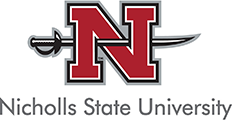What Is Git? Definition and How to Use It was originally published on Forage.
Git is a version control system that allows software engineers, programmers, and developers to work together on projects. In Git, engineers can record every change to a source code, making it easy for them to revert to older versions and ensure projects develop and adapt quickly. Technology professionals rely on different workflows to cooperate efficiently on code across teams of engineers.
What Is Git?
Git is a free and open-source version control system that allows for collaboration and coordination between programmers, software engineers, and software developers working on source code. As an open-source product, Git is free to use for individuals and organizations — the program’s source code itself is “open” and available to anyone.
>>MORE: Learn the differences between software engineers and software developers.
Version control systems (VCSs) are types of programs that track changes to source code, or the foundational programming behind software. When building large-scale software projects, things change often and quickly — clients may decide they want a different feature, or a project manager may take one part of the project in a different direction (only to change their mind a few weeks later). With version control systems like Git, engineers can revert to older versions of the code and undo changes, so projects keep moving and adapting seamlessly, and the code stays clean.
“You can think of it as a time machine,” says Ryan Taylor, engineering manager at JustWorks. “Each time an engineer adds something new, you have a new state in time. If something were to go wrong, you can easily revert to any other discrete point in time in the past based on a property called the commit hash.”
Another reason Git is popular is you can branch existing source code to build new projects. Some projects work off similar codebases, so engineers can use Git to begin separate projects with similar codebases simultaneously or copy existing branches to a new project.
When using Git, you can work in a command line interface or through more visual desktop applications, often called graphical user interfaces (GUIs), such as GitHub desktop or GitViewer.

Electronic Arts Software Engineering
Develop a new feature for the Sims 4 game as a Junior Software Engineer in this free job simulation from EA.
Avg. Time:
5 to 6 hours
Skills you’ll build:
Communication, feature design, feature proposal, object-oriented design, class design, code analysis, data structures, code readability, game engine technology
Who Uses Git?
A variety of companies and industries use Git’s version control system. Most companies that rely on software engineering for web development, creating applications, or building enterprise software use Git or a close alternative.
>>MORE: Explore what companies are in the technology field in 2024.
Software developers, DevOps engineers, and project and product managers often rely on Git to track changes to software and projects.
“Git also supports a tool called git-lfs (Git Large File Storage), which allows storage & versioning of larger blobs,” says Taylor. “So, you may find other teams such as designers or product people using Git, but it’s a bit more rare.”

Accenture Know the Code
Help a client take control of their fast growing code base, as a software engineer at Accenture in this free job simulation.
Avg. Time:
4 to 5 hours
Skills you’ll build:
Object oriented programming, Java, Spring, code refactoring, continuous integration, Jenkins, DevOps, agile methodology, software development lifecycle (SDLC)
How to Use Git
Think of Git as a flowchart that details the changes to a project. The chart includes a main branch, sometimes called a master or default branch. Then, engineers record all changes to the main branch in chronological order, creating a full timeline of edits.
Engineers can create separate branches off the main branch and use them to test new features and build new projects. Engineers and developers rely on repos or repositories throughout Git — repos are folders that store project changes. Using commands, engineers develop and review changes to the branches.
Git Workflows
Workflows in Git determine how engineering teams work together on projects and where they record changes. The types of Git workflows engineering teams typically use are:
Centralized Workflow
A centralized workflow involves all developers and engineers working on and making changes to the main branch simultaneously. In centralized flows, new branches aren’t typically added. Additionally, centralized workflows rely on a centralized repo for all developers.
Gitflow
A popular workflow style in DevOps, Gitflow uses multiple branches instead of one main branch. For instance, developers use one branch for official releases and keep track of more minor changes on a separate branch. In this system, the main branch only holds a shortened version of the changes made, usually only very significant version changes, while the separate branch records all development changes.
>>MORE: Learn common DevOps interview questions for entry-level roles.
Feature Branching
Feature branching flows allow developers to use branches off the main branch to develop and test new features, protecting the main codebase from broken code or bugs.
Forking Workflow
In forking workflows, projects use multiple repos and branches for each developer. This system allows developers to change individual branches using each developer’s personal, server-side repos without affecting the main branch. The main branch only changes with approval by a project manager. Public open-source projects typically use this system since it allows unknown or untrusted developers to still contribute without their changes compromising the entire project.
Explore Careers in Tech
Unsure which career in tech is right for you? Find out with our free quiz.
Git Commands
Git commands allow you to add changes, create copies of branches and total source codes, and merge branches. Some of the most commonly used commands include:
- Git commit: Makes changes to the repository
- Git commit –amend: Allows you to modify the most recent commit
- Git add: Tells Git you would like to add a change to a file in the following commit command
- Git branch: Allows you to see branches, create new branches, or delete existing branches
- Git checkout: Allows you to choose which branch to apply changes to
- Git clone: Creates a copy of a project
- Git pull: Allows you to bring in objects (such as commits, files, or references) from repositories and merge them into your project in one command
- Git push: Allows you to send objects from a local repository to a remote repository
- Git log: Shows a history of changes
- Git merge: Allows you to merge branches or tracked change histories together
- Git revert: Undoes recent commits but doesn’t delete the record of changes
- Git stash: Saves a record of working or unsaved changes (that haven’t been committed) to use later and reverts the branch to its previous state (with to-date committed changes)
When making changes (or commit commands), you include a short description of the changes made so it’s easy to track a project’s development and progress.
“Keep it simple, and focus on making sure each commit you write is non-breaking and has a good description of the change in its commit message,” says Taylor. “Try to keep commits small so the change can be described generally in a single line.”
Git ultimately has a wide array of possible commands that allow you to do everything from updating server information to inspecting changes to troubleshooting bugs. Additionally, the process of deciding when and where to use each command can be a complicated thing to learn.
Best practices in Git are “the type of thing you pick up on the job from working with peers more experienced than you and general code reviews,” says Taylor. “Just be open to critical feedback when other engineers comment on your code. They are critiquing your code, not you.”

JPMorgan Software Engineering
Build an interface with a stock price data feed and visually display data to assist our traders as a Software Engineer at JPMorgan Chase in this free job simulation.
Avg. Time:
5 to 6 hours
Skills you’ll build:
Financial data, Python, Git, basic programming, React, typescript, web applications, technical communication, financial analysis
Git vs. GitHub
When learning about Git, you’ll often hear GitHub brought up simultaneously. While Git is the software that allows for version control, GitHub is an online host for repositories. In other words, developers and engineers can store the changes they make in Git in GitHub.
GitHub also allows you to make projects public. Engineers can collaborate on public projects as part of open-source software efforts, and you can show employers your experience in software development and engineering. As a centralized space for holding source code, GitHub can be a great resource for exploring open-source projects, working with other developers, and storing your work for others to see.

Citi Technology Software Development
Improve loan management systems and build a real time stock market dashboard with the Technology Software Development team in this free job simulation from Citi.
Avg. Time:
5 to 6 hours
Skills you’ll build:
System design, state diagrams, flowcharts, written communication, machine learning, risk assessment, Java, APIs, back end development
Showing Git Skills on Your Resume
The best way to show your experience with Git is through a GitHub or other online portfolio of work. By showing potential employers a collection of your projects, they can see how you organize your work, write code, and develop software.
If you have previous work or internship experience using different Git workflows, mention your familiarity in the description of the job or internship on your resume. Additionally, including information about specific projects you worked on (especially those not in your portfolio) can help employers understand your background better.
If you don’t have any prior professional experience, building projects on your own and keeping them in a portfolio can show employers you know what you’re doing. School projects, a website for a friend’s small business, and simple mobile applications are excellent examples to include in your portfolio and can help you stand out.
You can also discuss your projects in your cover letter. Explain how and why you built them and how the skills translate into the work you’re applying for.
Including relevant skills on your resume is another way to show employers you have what it takes. Some key tech skills to include alongside Git and your GitHub portfolio include:
- Knowledge of the software development lifecycle (SDLC)
- Strong communication skills
- Experience in data analysis
- Programming languages (such as Python, JavaScript, and SQL)
- Critical thinking
- Data structures and algorithms
Start learning the skills you need for a career in tech with our free Software Engineering Career Path.
Image credit: Canva
The post What Is Git? Definition and How to Use It appeared first on Forage.




